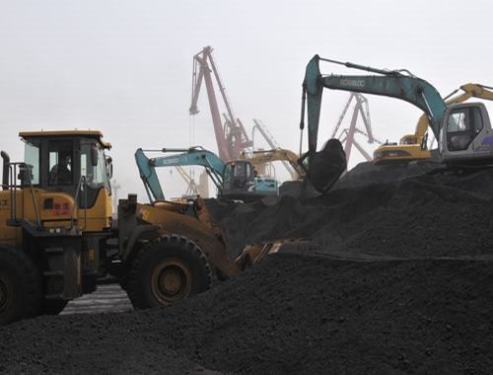 In September, raw coal production was negative again. Due to the sluggish demand in the downstream, the low price of coal has caused small and medium-sized coal enterprises to cut production or even stop production due to pressures from cost and inventory. Following the negative growth in output in August, the output of raw coal and coke in the country again showed a negative growth year-on-year in September. According to statistics, the total output of raw coal in September was 319 million tons, which was a year-on-year decrease of 3.5% and a decrease of 1.0%. According to the current preliminary statistical data, the cumulative value of raw coal output from January to September this year reached 2.84 billion tons, an increase of only 2.2% year-on-year, and the growth rate fell by nearly 10 percentage points.
In September, raw coal production was negative again. Due to the sluggish demand in the downstream, the low price of coal has caused small and medium-sized coal enterprises to cut production or even stop production due to pressures from cost and inventory. Following the negative growth in output in August, the output of raw coal and coke in the country again showed a negative growth year-on-year in September. According to statistics, the total output of raw coal in September was 319 million tons, which was a year-on-year decrease of 3.5% and a decrease of 1.0%. According to the current preliminary statistical data, the cumulative value of raw coal output from January to September this year reached 2.84 billion tons, an increase of only 2.2% year-on-year, and the growth rate fell by nearly 10 percentage points. The spread of thermal coal at home and abroad will expand, and the import volume may recover in the future. In September, China's coal imports (including brown coal) fell by 8.9% to 18.63 million tons. The recent international coal prices continue to decline. The latest data show that Australia's BJ coal prices have dropped to a new low of US$80.98/ton during the year. On the contrary, China’s coal prices in ports have maintained a steady upward trend in the near future. We have tracked the 5,500 kcal thermal coal price of Qinhuangdao coal and Australia's BJ coal price spread widened to RMB 140/t. Although the regained advantage of imported coal prices may stimulate the rapid recovery of coal imports in the fourth quarter, the following two factors will restrict the growth of coal imports: 1) Downstream power plants are under pressure to destock, and their purchase intention is not Strong; 2) In the previous period, the sharp fall in domestic coal prices led to losses for import traders, and import traders would be more cautious in determining domestic coal price changes and the amount of imported coal purchased.
Maintain industry "synchronous" rating. At present, the domestic coal industry is in a pattern of basic balance between supply and demand, and coal prices have steadily increased. As the weather turns cooler and the state regulates the macro economy, the downstream demand for coal in the fourth quarter is expected to warm up. However, under the dual pressure of low international coal prices and accumulated downstream stocks, it is expected that domestic coal prices will remain low in the future.
Based on many years of rich experience in slurry pump manufacturing and design, NAIPU can undertake OEM customization for the whole set of pump and various spare parts. The slurry pump spare parts can be made of various material according to customer`s requirement, Such as : Alloy 20, Hastelloy Alloy , A 61 and so on.
OEM High Chrome Slurry Pump,OEM Pump Parts,OEM High Chrome Impeller,OEM Centrifugal Pump
Shijiazhuang Naipu Pump Co., Ltd. , https://www.naipu-pump.com